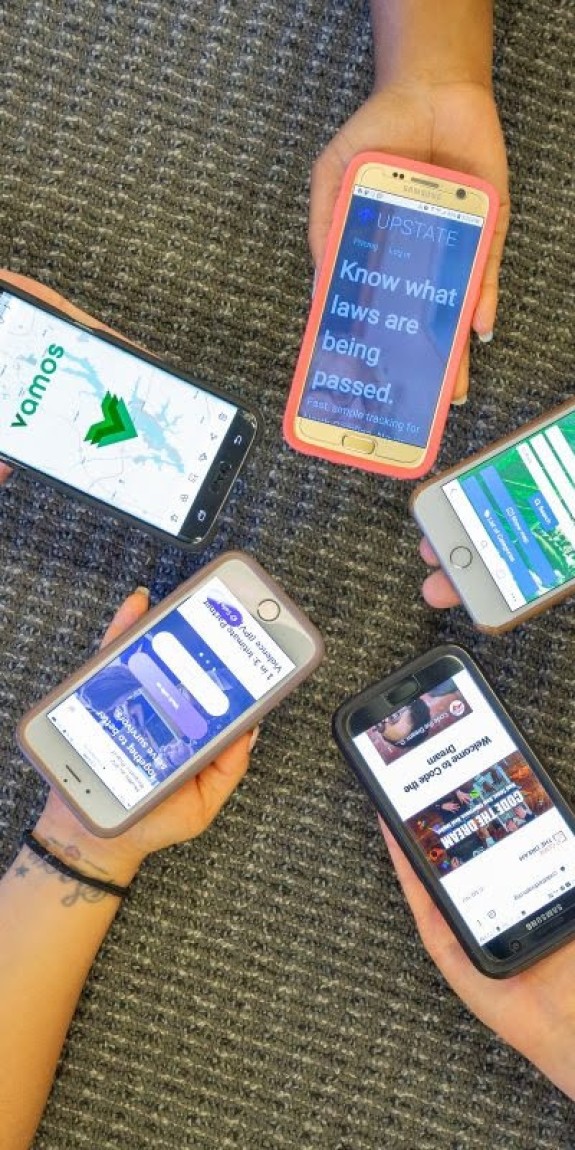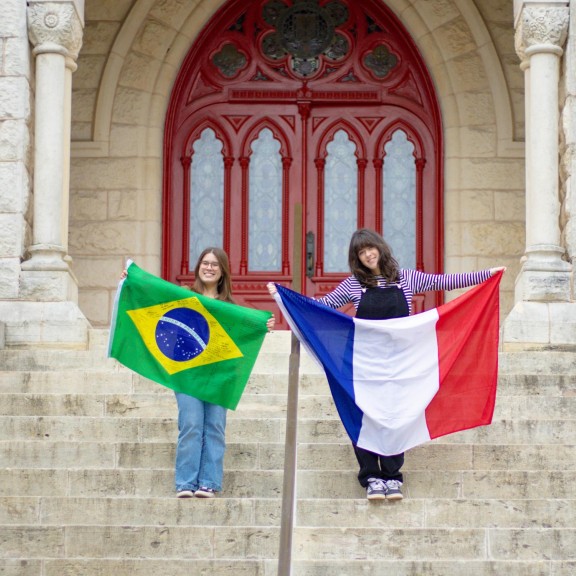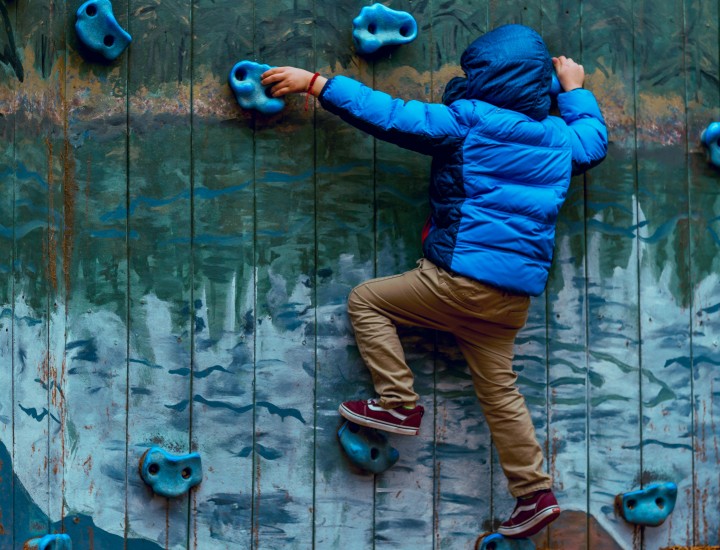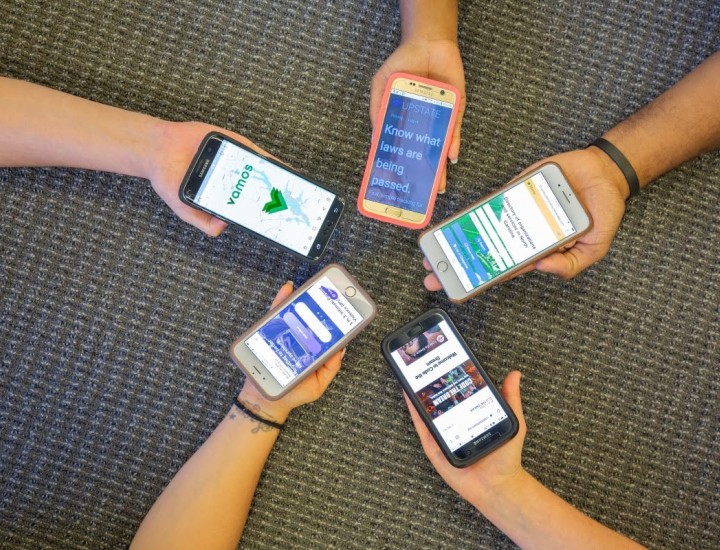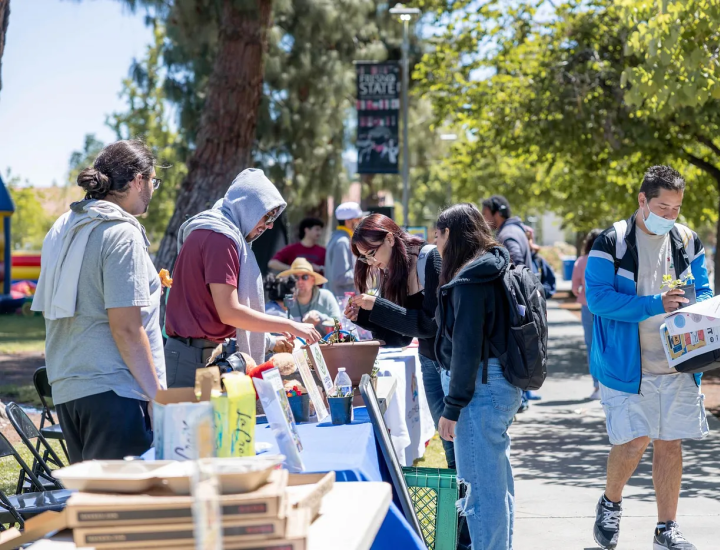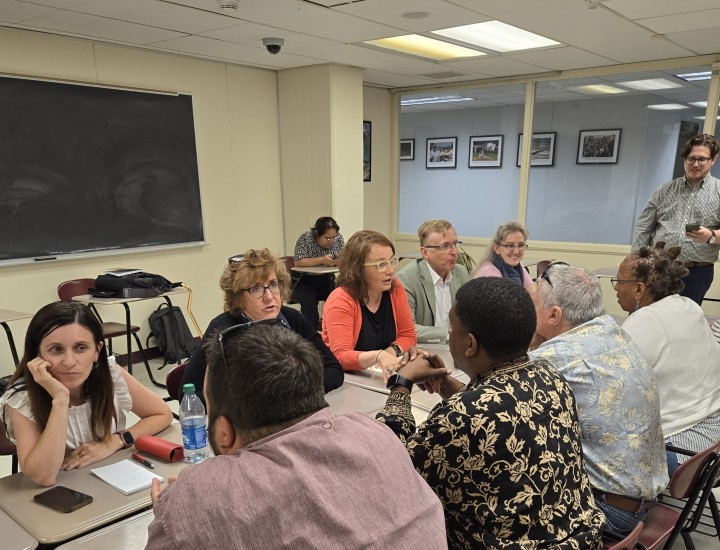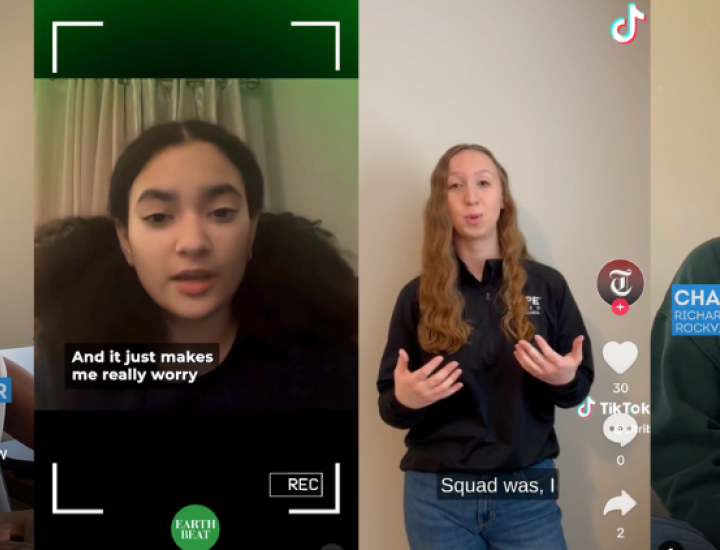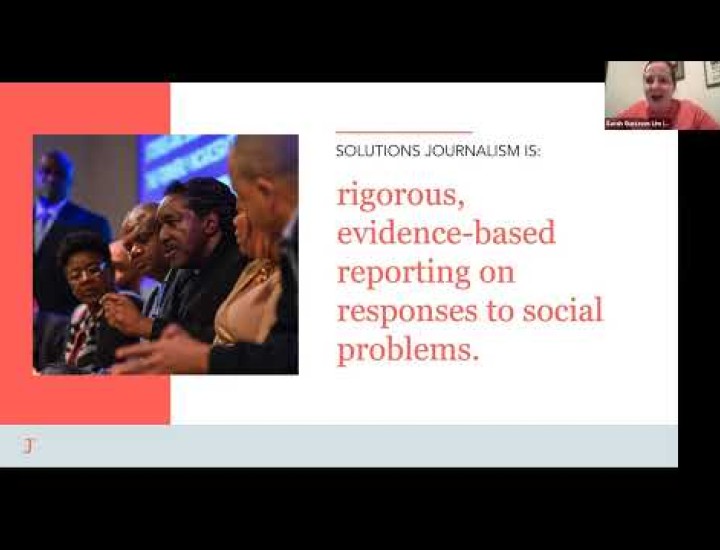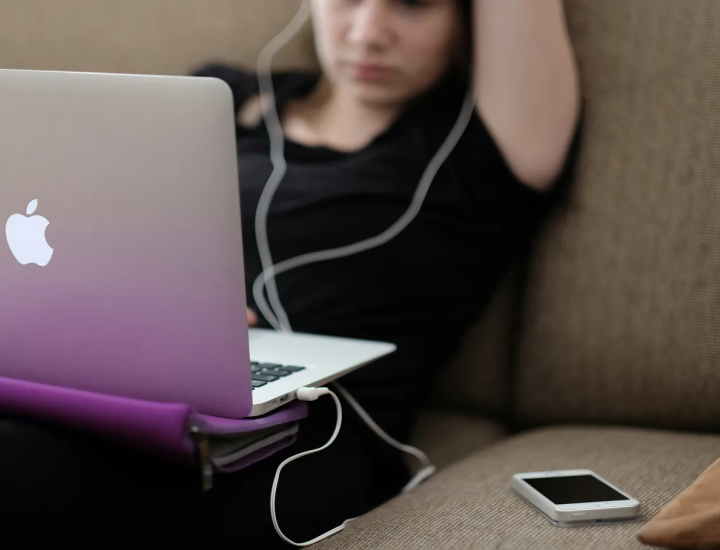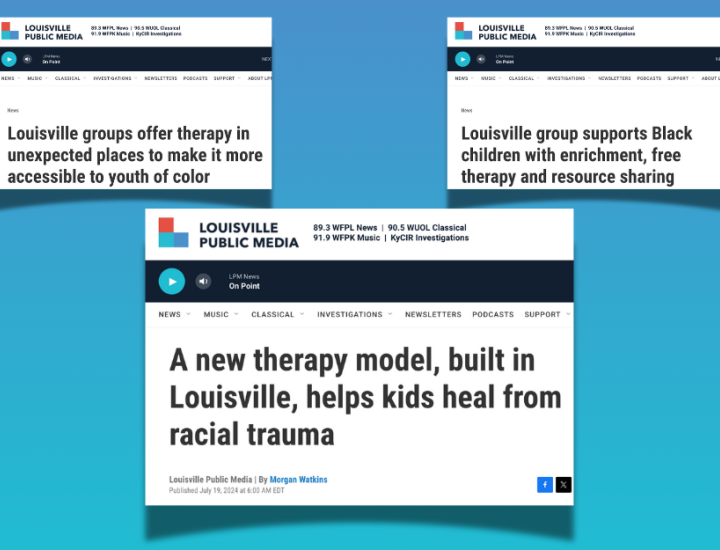Youth Mental Health
Journalists are producing community-informed, solutions-focused reporting about what's working to support youth mental health.
As young people report they find traditional news overwhelming, unrelatable, uninspiring and unrepresentative of their generation, the Solutions Journalism Network is supporting stories and reporting resources that center youth assets, aspirations and lived experiences of mental health.
Pictured: International student journalists Anna Pratts (left) and Gabrielle Caumon hold flags at St. Edward's. They are reporting on the unique mental health factors international students are facing in 2025 as part of the Student Media Challenge. Photo by Daniel Brannon for Hilltop Views
The Solutions Journalism Network is announcing the third cycle of its HEAL Fellowship. Ten U.S journalists will be selected to deliver projects that:
- (H)elp spread rigorous reporting on what’s working to address mental health issues and inequities, including anxiety, depression, ADHD, trauma, racism, neglect, loneliness, and more
- (E)xpand young audiences’ access to solutions reporting on issues affecting them
- (A)ssess impact of solutions reporting and community engagement
- (L)earn and teach others how to report on and amplify youth mental health solutions journalism
Applications are open from Oct. 20 to Nov. 17, 2025. Learn more and apply here.
Student newsrooms are collaborating to cover student mental health through a solutions lens. This video highlights Student Media Challenge projects by Pepperdine University, Fresno State University and Dimelo, the student-staffed bilingual news service at the University of Southern California.
Solutions journalism is transforming communities — and the media industry
